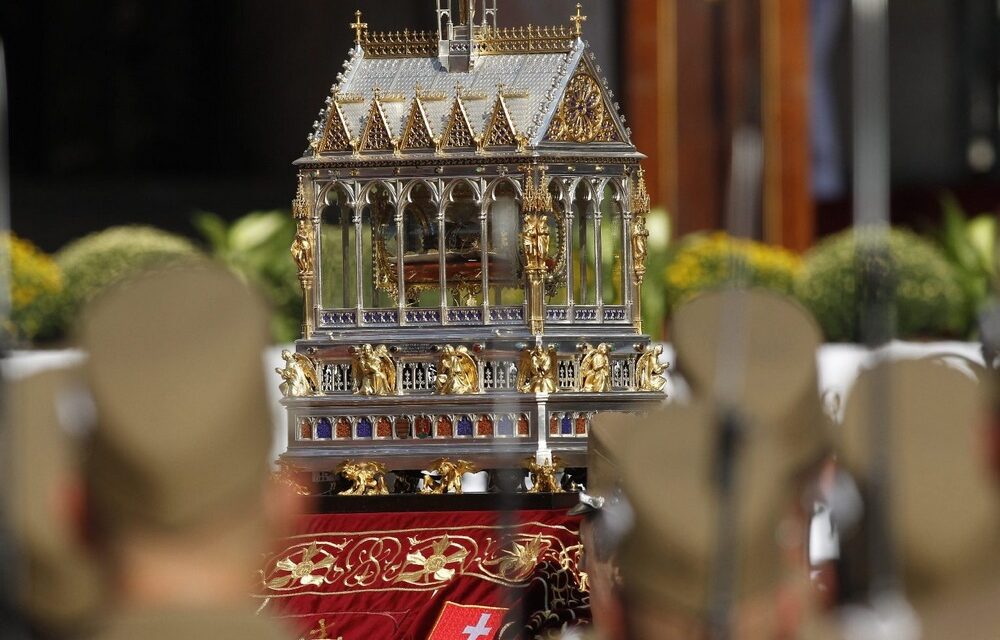On May 30, the Hungarian Church commemorates the finding of Saint Jobb and the transfer of the relics of King Saint Stephen.
The history of the hand relic of King Saint István dates back to the 11th century. István was laid to rest in Fehérvár in 1038, but due to the throne disputes that followed his death, the chapter, fearing the desecration of the corpse, moved him from the marble sarcophagus in the middle of the Basilica of the Assumption to the tomb under the basilica.
According to Bishop Hartvik's legend, the mummified right hand was then cut off, as miraculous power was attributed to it.
However, as he claimed later, when he was impeached, the guard of the treasury, guard canons Merkur, "appropriated" it at the behest of an angel, and then hid the relic on his property. He cited that he wanted to keep it in a safe place during troubled times.
King László I (1077–1095) became aware of the relic's safekeeping location during the canonization of István in 1083, and visited Merkur's estate in Bihar on May 30 (according to some sources, on May 29).
Accepting the excusing legend of the guardian canons, he forgave him, and then founded the Szentjobb Abbey (today Sâniob, Romania) to keep the hand relic here.
The day of finding Szent Jobb was already mentioned in 13th century calendars. The respect of the hand relic was enshrined in the Golden Bull of 1222. Szent Jobber has been a prominent destination for pilgrimages for centuries.
During the Turkish subjugation, Saint Job was hidden in Székesfehérvár, and then, together with the skull relic of Saint Stephen, it was sent to Croatia, to the Dominican monastery in Ragusa (today Dubrovnik) around 1590. In 1684, Lipót I (1657–1705) was the first to attempt to recover them, but due to the wars with the Turks, and then with his death, all of this was forgotten. Finally, after long diplomatic negotiations, Mária Theresia (1740–1780) took Saint Job to the chapel of the royal castle in Buda on June 21, 1771; while a part of the skull relic went first to Bratislava, and then to Székesfehérvár on April 2, 1778.
Cover image: Saint Jobb at the St. Stephen's Day mass in front of the St. Stephen's Basilica in Budapest
Source: MTI/ Zsolt Szigetváry













